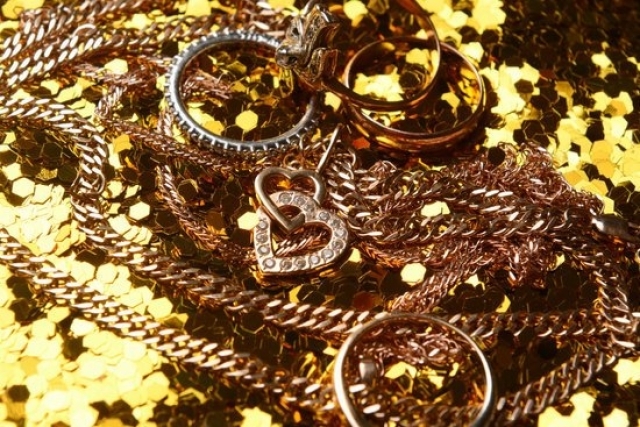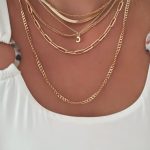When a piece of stone jewelry becomes broken, it can be an upsetting experience for the jewelry owner. However, it does not have to mean the end for the beloved pieces. Though repair may seem daunting and complicated, fixing beloved jewelry is a much better alternative than throwing them away or leaving them broken. Taking the necessary steps to do a proper fix can even save money due to not having to buy replacement pieces as often.
Preparations: Gather Materials Needed
Before beginning any mending of broken stone jewelry, every jeweler needs to make sure they have all the necessary materials to make any repairs quickly and effectively. For example, if repairing earrings with missing stones, glue sticks, tweezers and various sizes of sandpaper are essential materials that need to be gathered in advance. Preparing ahead of time will ensure a smooth repair process when handling fine details like this project involves.
Types of Stone Jewelry
The first thing to consider when you are attempting to repair broken stone jewelry is the type of stone you are dealing with. Stone jewelry can be made from a variety of materials, including precious and semi-precious stones, mineral crystal and glass beads.
Depending on what kind of gems or stones make up your jewelry’s design, you will have to adapt appropriate repair methods accordingly. Some common types of stone jewelry include jasper, turquoise, lapis lazuli, quartz, and peridot – as well as more modern creations such as Swarovski crystals and cubic zirconia.
Precious gems such as rubies and diamonds can be tricky to work with because of their delicate natures. These materials should always be handled with greater care than other stones when conducting repairs because they possess greater financial value. If your piece includes a precious gemstone then it is best to contact a professional jeweler who can assess proper restoration techniques for these rarer stone types.
Semi-precious gemstones provide an accessible route to improving the aesthetic quality of damaged pieces without breaking the bank. Popular examples can include topaz, sapphires, emeralds and opals; many of which offer eye-catching color variations depending on lighting conditions or angle of viewing. With this in mind it is also worth considering resetting or replacing some stones in your damaged item; by injecting new life into an older model you can add value for sale if required.
Those looking for a quick fix over anything else may find success after experimenting with various adhesives such as epoxies or super glues; these options should only be used when dealing with smaller parts breakages like clasps that come off necklaces or bracelets. It is important to prioritize carefully though; by ensuring you attempt repairs appropriately you could save yourself costly replacements further down the line.
Gathering the Right Materials
Prior to attempting to repair broken stone jewelry, it is important to first gather the necessary materials. The materials needed include an adhesive; these can range from two-part epoxy to superglues and clear jewelry epoxies. Additionally, a chuck of fabric or small cloth is handy for cleaning and keeping the broken surfaces free from dust prior to gluing back together. It is also important to have tweezers for manipulating pieces.
Removing Any Visible Glue: Preparing Jewelry For Repair
Once all items necessary for the task are gathered, it’s time to prepare the jewelry for repair, beginning with removing any visible glue on either of the broken pieces that would prevent it from being properly fitted together again.
This may require using of a razor blade or cotton swab soaked in nail polish remover to remove any bonding agents and allow you to restore your broken stone jewelry back together without any additional issues caused by leftover adhesive material.
Adding Adhesive To Repair Broken Stone Jewelry
Once all visible glue has been removed and both pieces spotlessly clean, its time for reconnecting them via gluing them back together again with an appropriate adhesive that depends on what kind surface you’re working with (metal or plastic). Begin by applying the chosen adhesive onto one side of the break, sufficiently but carefully so as not to over apply, use tweezers if necessary while doing so.
Then fit both sides on top of each other before pressing firmly and holding them in place until set; this ensures proper reconnecting and that no air pockets are left in between both sides as this would result in an uneven connection. Finally inspect your work once more after setting aside until completely dry which usually takes anywhere between 5-30 minutes depending on type of adhesive used as well as humidity present during repair process.
Prepping the Stones
The material used to make jewelry today is usually very delicate and should be handled with care when in the process of repairs. Stones, especially broken stones, should also be given special attention and consideration. Many types of stone jewelry have been around for centuries so it is important to repair them correctly. Repairing broken stone jewelry can often be an intimidating task but, with some simple steps, one can get the job done right.
The first step in repairing broken stone jewelry is prepping the stones themselves which involves cleaning and ensuring that they are ready for repair. This includes removing any dirt or debris, and depending on the stone being repaired may include polishing it if it’s a softer type of stone like jade or coral.
One way to clean a gemstone is to dip it into a cup of lukewarm water mixed with a little mild dish soap and then brushing off any leftover debris with an old toothbrush. It’s also wise to wear rubber gloves when handling any gems so as not to leave oily residue on the surface of the stones that would affect their structural integrity later on down the line.
Once your stones are cleaned you will want to check them for defects such as cracks or chips that cannot be fixed with ordinary glue or putty. For example if a diamond has been cracked, you will likely need to replace it before attempting any further repair work as diamonds need to be reset rather than glued back together due to their hardness level.
If a coloured gemstone has chipped away then this can still be saved by sanding down the surrounding area and refilling with epoxy putty – this is only applicable if all pieces are still intact in one piece though, otherwise it too will have to be replaced just like a diamond would.
Mending the Broken Pieces
Broken stone jewelry is a common occurrence as stones can easily be dislodged if you are not careful with how you wear and store your jewelry. While it can be disappointing at first when such damage occurs, many broken pieces of jewelry are actually fairly simple to fix. Below is an overview of two common methods used to repair broken stone jewelry.
The Hot Glue Method: The hot glue method involves applying a small amount of glue to the edges of the stone’s setting in order to secure it back into place. First, make sure both the metal and the stone are clean and dry before attempting this method. Use a pair of small pliers to hold open the setting just enough for the glue to fit inside.
Then apply a small amount of hot glue – be careful not to overdo it – directly onto the metal where pieces have separated. Slide the stone back into place and set aside for 12 hours allowing it time to solidify. After that has passed, check again that there are no gaps between metal and stone before wearing your jeweled item again.
The Gemstone Flux Method: This method uses flux, an acid solution specifically for use on gems like jade, opal or turquoise, along with heated lead solder created in a melting pot or iron soldering tool. Heat helps activate the properties found in flux which allows for components to adhere together securely without affecting or damaging either material or embellishments added later on such as enamel work or diamonds.
When using this method make sure that both surfaces touching each other – metal and gemstone – are cleaned beforehand and coated with enough flux solution so they bond together well when heated later on using lead solder; too little flux might cause your solder joint not stay connected permanently.
It’s also important that once heated correctly with soldering tool all flux residue is flushed away by rinsing item in warm water right after working process is completed in order for reunited piece look attractive as intended once completely finished working/mending procedure is officially over.
Securing the Stones
Repairing broken stone jewelry involves securely reattaching the stones so that the piece of jewelry retains its beauty, strength and value. This can be done by using an adhesive like epoxy or a solder like silver. When gluing with epoxy, it is important to use the correct type; an epoxy designed for jewelry making is ideal.
It should provide flexibility and durability to secure the stones in place. After applying a thin layer of adhesive on the back of each stone prior to securing, you should allow for proper curing time before wearing or displaying the piece of jewelry.
Soldering is a more complex process, recommended only for those with expertise and experience. If done correctly, this technique will provide lasting results as it holds tightest when compared to most adhesives.
Soldering requires heating up the metal to melt the actual material, so special tools such as soldering kits are necessary. To ensure your safety, always use eye protection and never heat the area around other types of gems or stones during this process as heat can damage their stability.
Lastly, prongs are another way to safely secure stones without risk of damage. Prongs are useful if they have been previously used or if there is enough underlying structure left behind from them once detached from where they had been originally placed on a jewel item.
A prong has three parts: claws, tips and girdles which hold gemstones in place for added security by having two tips wrap around each side edges of the stone to ensure its stability. Prongs should fit snugly onto your stones’ surface for optimal security; if needed, you may need new prongs that your local jewelry store can help acquire for you at nominal costs.
Finishing Touches
Reinforcing the repair on stone jewelry is a vital step to ensure your repairs are secure and hold the stones in place. Here are some top tips for reinforcing those broken stone jewelry pieces.
First, before beginning any repairs, double-check that all pieces are still intact and there aren’t any missing stones. Place all pieces onto a clean, lint-free cloth in the correct order so you can easily re-assemble them when it comes time to glue. Once all your components are ready, use a clear adhesive suitable for steel or brass components such as epoxy resin or jewelry cement designed specifically for metal adhesion.
Take care not to accidentally stick the pieces together before applying the glue and allow adequate time for each component to dry properly before attaching it to the other parts. It’s also advisable to test an unseen spot with your adhesive first before starting on an entire piece.
To help prevent further cracking and movement in your stone jewelry pieces, apply fiber reinforced tape as an additional layer of repairment. Many crafts stores stock fiber tape which is readily available in various widths and heights depending upon what you’re working with. When placed around all sides of each stone setting, this type of reinforcement ensures long lasting wear and stability against bending, movement or further structural damage over time.
Finally, once everything is put back together carefully inspect it one last time from all angles including making sure no gap has been left behind between components after gluing them together. A few drops of water should ‘bead’ along evenly without sinking into it if no breakages have occurred during repairment ensuring that your piece won’t experience further future damages due to lack of reinforcement.
This provides one final seal before wearing; keeping your jewelry in beautiful condition for years to come.
Finale
When caring for recently repaired stone jewelry, it is essential to take into account the type of repair and materials used during the procedure. Depending on what type of stone was used in the piece, certain methods should be applied to preserve and protect the integrity of the item. For example, with softer stones such as turquoise and opal, the wearer should avoid contact with water or overnight storage in humid spaces as this could cause damage over time.
After the stone jewelry has been repaired, there are a few steps that can be taken to ensure its proper preservation. To start, make sure to apply any protective product recommended by your jeweller or craftsperson – such as varnish or lacquer – which will help protect against everyday wear and tear caused by contact with body oils and skin acids.
It’s also important not to expose your newly repaired piece to any cleaning products or lotions that could affect its stability or appearance over time. When storing stone jewelry after repair work has been completed it’s always best practice to keep items away from sources of direct sunlight so as not to fade or affect the colouring of a stone piece.
Finally, regular maintenance checks with a jeweller is an important step in preserving newly repaired stone jewelry over time. A professional can review your item for any potential damage or corrosion issues due to wear-and-tear as well as check-in on how well previous repairs are holding up under everyday conditions.
Any small cuts made during repair work can slowly open up over time if not monitored and cause lasting damage to an item if left untreated; professional maintenance exams can catch such instances early before they result in something more serious down the line. With all these precautionary steps kept in consideration, those who own recently repaired stone jewelry should enjoy many years of beauty and satisfaction from their beloved pieces without worry about further deterioration or breakage anytime soon.

Welcome to my jewelry blog! My name is Sarah and I am the owner of this blog.
I love making jewelry and sharing my creations with others.
So whether you’re someone who loves wearing jewelry yourself or simply enjoys learning about it, be sure to check out my blog for insightful posts on everything related to this exciting topic!





